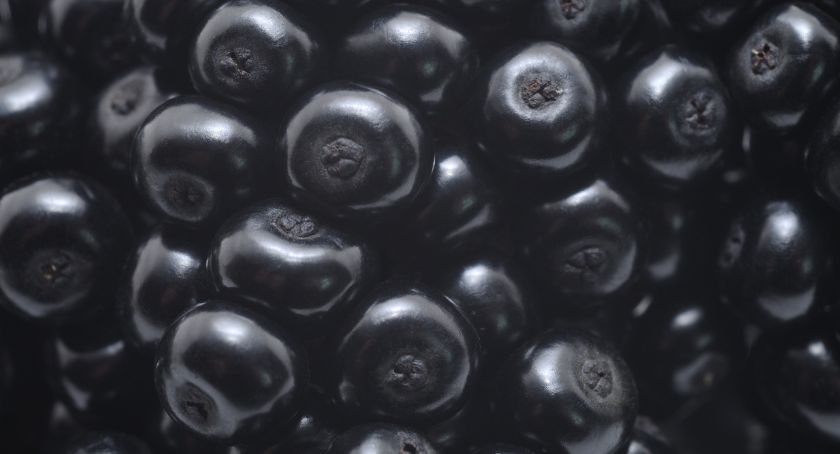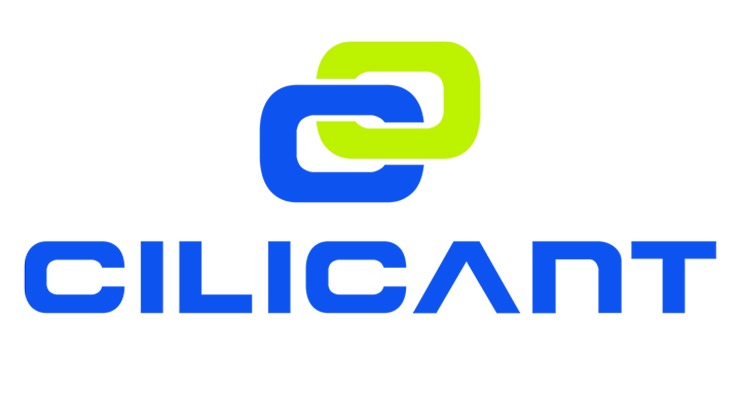Features
The Energy Market: Beyond Caffeine
Potent energy drinks packed with quick fix stimulants may be losing market share, opening opportunities for longer lasting natural alternatives.

By: Sean Moloughney
Editor

While the economy wanes, many once-untouchable markets may be set to change. But energy formulations seem to have convincing staying power-even if growth rates stabilize over the next few years-as consumers seek out natural sources of sustainable energy.
One of the most coveted markets in recent years has been the sports and energy drink category, which grew about 13% in 2007 to nearly $10 billion in sales, according to Nutrition Business Journal (NBJ), Boulder, CO. But this rate pales in comparison to 2006 and 2005, which saw 24% and 27% growth, respectively. So will sales continue to tire? While many industry insiders believe they will, this could open up other avenues for manufacturers.
Jeff Wuagneux, president and CEO, RFI Ingredients, Blauvelt, NY, said the energy market is shifting, not necessarily slowing. “The traditional energy soft drink market (carbonated especially) may be reaching its peak. However, many industry specialists feel there are numerous market niches to be developed, as market categories become more specialized and as delivery systems become more sophisticated,” he said. “There are so many new and exciting ingredients that can be packaged in so many ways. Novel products that are organic, fair traded, provide endurance or are free from stimulants will be available in many delivery systems.”
In the energy beverage arena, Red Bull has dominated, with 33% ownership of the market, while Hansen’s Monster Energy was the only other beverage to crack the $1 billion sales mark in 2007, according to NBJ estimates. As companies competed for shelf space, the market was quickly flooded with spin-offs, often fortified with stimulants, such as caffeine, guarana, ginseng and taurine-a derivative of the sulphur-containing amino acid cysteine-as well as carbohydrates.
The market has become saturated with so many brands that some experts predict the major players will consolidate control. “In uncertain economic climates, people tend to purchase brands they know and trust, while being mindful of low cost leaders,” said Nichole DeBlock, director of marketing and product development, Nutraceuticals International, Elmwood Park, NJ. “Additionally, consumers are more cautious of the ingredients in these drinks and want an all-natural product with no adverse side effects.”
Given the barriers to success in such a competitive environment, Gracey Matlosz, marketing analyst, DSM Functional Food Marketing, Parsippany, NJ, said product innovation is the best way for a manufacturer to differentiate its products from other producers, carve out market share, and possibly grow the category.
How Much is Too Much?
A variety of consumer and professional groups have raised concerns about excessive caffeine amounts in products; some have even called for warning labels on energy drinks. While Red Bull contains 80 mg of caffeine per 8.3-oz. can-about the same as a cup of coffee-and Monster contains 160 mg per 16-oz. can, some beverages may contain up to 500 mg.
In 2005, there were 4600 caffeine-related calls to the American Association of Poison Control Centers, according to a report from University of Massachusetts Medical School. More than half involved people under 19 years of age and 1345 required treatment in a healthcare facility. Caffeine intoxication can cause nausea, headache, anxiety, heart palpitations, elevated blood pressure and other symptoms, but the amount that triggers such reactions depends on the person.
“The average daily caffeine intake for many users now far exceeds the 300 mg/day dosage recommended by the International Food Information Council (IFIC),” said Jan Kritzer, marketing coordinator NAFTA/Asia, BENEO-Palatinit GmbH, Mannheim, Germany. “A serious discussion began in March 2006, when governors of five states along with mayors of 17 cities began to call attention to the dangers of caffeine intoxication. In consequence, the American Medical Association, backed by some consumer groups, demanded mandatory labeling of the caffeine dosages in foods and beverages.”
The impact of these campaigns remains to be seen. Although, negative press regarding potential dangers of consuming so much caffeine has raised red flags at FDA, which has held roundtable discussions about possibly requiring manufacturers to include amounts on labels.
A Natural Approach
Dean Mosca, president, Proprietary Nutritionals, Inc (PNI), Kearny, NJ, said there are significant opportunities for manufacturers to offer consumers new energy options. “We can foresee a new generation of healthy energy beverages with the right combination of nutrients that don’t stimulate the nervous system, but enhance the body’s own energy furnace and use calories the right way.”
For instance, the company’s Benexia brand chia seed is ideal for healthy energy drinks, he said, as an “excellent source” of protein, calcium, fiber, vitamins and minerals. Chia oil is also rich in omega 3 fatty acids.
Rodger Jonas, national business development manager, PL Thomas, Morristown, NJ, said many consumers are looking for natural products that offer “sustained” energy, as opposed to the sort of “boom and bust” products that send people crashing after a short-term reprieve from fatigue. “I think people would jump at the opportunity to consume more naturally caffeinated products,” he said.
PL Thomas supplies Kaneka Q10 CoQ10, which is self-affirmed GRAS (Generally Recognized as Safe) and ideal for functional food and beverage applications, Mr. Jonas said. CoQ10 occurs naturally in the body and shows promise in offering sustained energy since it works in the mitochondrial membrane as an electron acceptor/proton donor, facilitating the process of energy production through the adenosine triphosphate (ATP) cycle. Research has shown it helps increase exercise tolerance and recovery time. Mr. Jonas also noted the importance of CoQ10 supplementation over the lifespan, considering levels decrease with age, potentially leading to various health conditions, including fatigue.
While CoQ10 is present in every cell, the human body produces maximum quantities around age 20, and production levels decrease with age, to the point that by age 40 the body’s production is cut in half.
Scott Steinford, president, ZMC-USA, The Woodlands, TX, said, “The future of this ingredient will become an important element in the aging consumer’s quest to recover energy.”
Moreover, he added, “It is widely agreed that cholestorol-lowering drugs-statins-decrease CoQ10 levels within the first 14 days of onset of treatment, and the number one reported side effect of statin therapy is muscle fatigue. A large number of doctors routinely suggest CoQ10 to their patients who are prescribed a statin.”
DSM Nutritional Products also supplies ALL-Q CoQ10, which is available in both tablet-grade and cold-water dispersible (CWD) forms. The CWD form is GRAS and suitable for a variety of beverages and foods, said Bob Berman, senior marketing manager with DSM.
A Diversified Market
According to Paul Altaffer, vice president of business and product development, RFI Ingredients, the future of the lucrative energy formulations market will involve redefining the category into sub-sectors. “The most important growth areas will be organic, endurance and caffeine/stimulant sensitivity,” he said. “RFI offers a variety of certified organic and fair-trade energy products and has partnered with Guayaki, for example, to develop yerba mate extracts. Also available are certified organic guarana, green tea and green coffee extract. These products have the additional benefit of standardized levels of polyphenols, which act in synergy with natural caffeine to enhance thermogenic properties.”
RFI also offers Chocamine, a proprietary and synergistic formula that is standardized to theobromine (a stimulant in the caffeine family associated with endurance), offering many of the energy and mood enhancing properties of chocolate without the sugar and fat of confectionery.
One class of energy ingredients known as adaptogens-botanicals that help the body deal with stress and promote homeostasis-may increase stamina over the long-term, said Suzanne McNeary, president, NutraGenesis LLC, Brattleboro, VT.
Ginseng has been cited among the most potent, and is clearly a popular component of many formulations. However, other botanicals may be finding their place. For instance, rhodiola rosea, lesser known in the Western World, has demonstrated the ability to increase blood supply to the muscles and brain, while also increasing protein synthesis.
Ms. McNeary, said Sensoril, a proprietary, multi-patented, standardized extract of Ashwagandha (Withania somnifera) has demonstrated adaptogenic properties resulting from bioactive compounds that are extracted from specially grown Ashwagandha roots and leaves in a patented, water-based process. Sensoril is the patented property of Natreon, New Brunswick, NJ; NutraGenesis is the exclusive global sales and marketing agent.
In an effort to diversify in a competitive energy market, many companies have developed new ingredients from other natural sources. Cha de bugre 10:1 extract from Nutraceuticals International comes from a Brazilian plant that has been referred to as “cafe do mato,” or “coffee of the woods,” for its powerful stimulant effects, according to the company’s Ms. DeBlock. It is brewed in large drums during festivals in Brazil, offering participants sustained energy throughout the night. Another of the company’s energy ingredients, FucoPure fucoxanthin, which is derived from Japanese Wakame seaweed, breaks apart protein families in the tissue that surrounds the abdominal region, allowing the body to use fat as energy.
The NAT’Life Division of Naturex, Avignon, France, has developed Powergrape, a natural grape extract that boosts energy through several scientifically demonstrated, synergistic mechanisms of action, said Karine Nardon, marketing support manager. Powergrape maximizes physical performance and recovery by improving muscle oxygenation via hemoglobin protection (better oxygen transport); by protecting muscles against risk of damage and cramps; by protecting muscle cells against inflammation; and by protecting cells against oxidative stress and related damage.
Matt Phillips, president, Cyvex Nutrition, Irvine, CA, said that while there is still a “hefty demand” for stimulatory botanicals, cereal grasses like alfalfa also contain energy enhancing properties.
The company’s AlfaPro Alfalfa Juice Powder Concentrate contains 18 amino acids, along with beta-carotene, vitamins B1, B2, B6, B7 and vitamin E. It also contains 13 minerals, and is a “good source” of potassium, magnesium and calcium.
“Young alfalfa plants are harvested at their nutritional peak,” said Mr. Phillips. “Through an all-natural process, without the use of any solvents, cold juice is pressed out of the plants and dried at a low temperature to prevent nutrient loss. The resulting alfalfa juice powder concentrate provides a broad spectrum of nutritional benefits.”
Cecilia McCollum, executive vice president, Blue California, Rancho Santa Margarita, CA, said her company utilizes “unique purification and fermentation technologies that allow us to produce highly purified plant extracts ideal for energy and weight loss formulas.” The company’s ingredients include Natural Caffeine 99% derived from green tea and EGCG (epigallocatechin gallate) 95%, which will be introduced in 2009.
Within its offerings, Blue California also lists the African kola nut, a natural caffeine source thought to reduce fatigue. Reportedly, it has been used for centuries in the tropics to promote endurance.
According to Dr. Jit Maheshvari, vice president, Business Development, Orgenetics, Anaheim, CA, it is important to evaluate the safety and traditional usage of an ingredient before looking at efficacy. “We developed a new ingredient called Orgen-S, which is a Sesbania extract, grown under organic conditions and extracted in our ISO standard and Kosher certified extraction facility. The product is traditionally used as a food in India and it has an excellent amount of vitamin B complex to give you energy on longer usage.”
Super(ior) Fruits
These days it seems the race is on to discover and develop the nutraceutical industry’s next top superfruit. According to Steve Siegel, vice president, Ecuadorian Rainforest, LLC, Belleville, NJ, “The latest ‘It’ ingredient to hit the market is maqui berry (Aristotelia chilensis), otherwise known as Chilean Wineberry. This tiny purple berry is purported to have the highest ORAC (Oxygen Radical Absorbance Capacity) value of any of the superfruits. In one single sweep, the maqui berry has created a whirlwind of excitement and possibility.”
The energy market has already capitalized on the natural properties of other exotic fruits, including the increasingly popular Brazil-native, acai, which has a few seeds scattered in various health categories. Guarana, another Amazonian fruit, has also made a significant impact on energy formulations for its ability to fight fatigue and increase energy. According to a clinical study conducted by Human Cognitive Neuroscience Unit, Division of Psychology, Northumbria University, guarana improved secondary memory performance, alertness and mood.
Consumer awareness of all-natural alternatives to synthetic energy ingredients will play a large role in the evolution of this important segment, Mr. Siegel said. “In today’s market, it is increasingly difficult to understand the full benefits of ingredients. However, Ecuadorian Rainforest is absolutely committed to the cause.”
Energizing Alternatives
Alongside caffeine, guarana and ginseng, the amino acid taurine has been a principal ingredient used in many energy drink formulations.
“Much like vitamin supplementation, taurine has helped increase consumer awareness of amino acid activities in the human body,” said Paul Lorusso, technical sales manager, Premium Ingredients, Carol Stream, IL. “This has consequentially driven demand for more amino acids like L-tyrosine, L-arginine and L-carnitine.” Many branched-chain amino acids with a 2:1:1 blend offer reprieve from the degradation of muscle tissue, he added.
Chief among the protein building blocks, L-carnitine plays a fundamental role in facilitating the production of energy from fat. It carries long-chain fatty acids, one of the primary energy sources for the body, into mitochondria, where they are broken down for energy generation.
Research indicates Carnipure brand L-carnitine from Lonza, Allendale, NJ, decreases hypoxic stress following resistance exercise. “Changes were found in tissue oxygenation response of the thigh muscle in resistance-trained athletes during recovery periods following squat exercises,” said Kevin Owen, PhD, head of technical marketing and scientific affairs, North America, Lonza. “We’re pleased with this new evidence since it further strengthens the story behind the benefits of Carnipure tartrate on exercise recovery.”
Alongside amino acids, there is strong scientific evidence and consumer awareness surrounding vitamins related to energy. “Vitamin B12 and B6, in particular, have a distinct and scientifically well established function within the human energy metabolism, and project a very positive image among consumers,” said BENEO-Palatinit’s Mr. Kritzer.
Carbohydrates have also played a key role in formulating effective energy products. In addition to the physiological benefit of providing glucose energy to the system, they also help balance and mask what are often high doses of bitter caffeine, said Mr. Kritzer. The company’s specialty carbohydrate, Palatinose, is hydrolyzed and absorbed four to five times more slowly than sucrose, he said. “In this way, it supplies glucose as fuel for body and brain at a time when the digestion and absorption of sucrose or pure glucose have long ceased.”
A recent study conducted at Freiburg University Clinic in Germany compared the results of two groups of experienced cyclists exercising 1.5 hours at sub-maximal steady state, followed by a time trial. One group was given a sports drink containing Palatinose while the other was given a drink containing high-glycemic maltodextrin. During the time trial, the athletes who were given Palatinose performed better, showing a clear tendency to finish one minute (3%) faster than the maltodextrin group. The Palatinose group also had more sustained energy, with a specific increase in power in the last five minutes of the test, plus significantly higher fat oxidation and superior maintenance of blood glucose levels throughout the entire study.
Karen Todd, RD, CSCS, CISSN, director of marketing for Kyowa Hakko USA, New York, NY, said that while carbohydrates and caffeine have propelled the energy market, consumers need more than just a physical boost.
“We undervalue the importance of mental energy in increasing one’s ability to mentally focus,” she said. “You can have all the energy in the world, but if you are not focused on what to do with it, you are nowhere.”
According to research published recently in NMR in Biomedicine, Kyowa Hakko’s Cognizin citicoline supports cellular activity by increasing ATP levels in the frontal lobe of the brain. “This is important because increasing energy in this area supports focus, concentration and one’s ability to get work done,” said Ms. Todd. “In addition to increasing ATP, Cognizin citicoline, as a multi-functional ingredient, will also assist in increasing levels of critical neurotransmitters, such as dopamine and acetylcholine, and enhances cellular integrity by increasing phospholipid synthesis.”
The Future of Energy Foods and Supplements
While the beverage category has grabbed most of the attention when it comes to energy-for better or worse-PNI’s Mr. Mosca said, “The market for energy foods has grown tremendously, leaping from a niche market for endurance athletes to mainstream. Some estimates have the energy bar market alone valued at more than $1 billion. We see continued double-digit growth of energy products with an increased focus on taste and ingredients that promote specific health benefits. However, with more than 70 energy bars on the market, we expect a retail shakeout may occur soon.”
Along with beverages, bars and cereals, Mr. Mosca said the desire for an energy boost is one of “the most common needs driving consumers into the dietary supplement aisles.”
Nutragenesis’ Ms. McNeary agreed, saying “energy shooters,” such as 5 Hour Energy-which contains a variety of B vitamins and amino acids-have stimulated a tremendous following with both retailers and consumers alike. “The majority of the energy shooters are declared as dietary supplements and we believe there is a great deal of growth potential for energy supplements for years to come,” she said.
It would seem then, there is room on store shelves for energy beverages, foods and supplements. ZMC’s Mr. Steinford said that while convenience is key, “I can see how the more informed consumers will gravitate to traditional supplementation to fill the proactive health needs this market provides.”




















